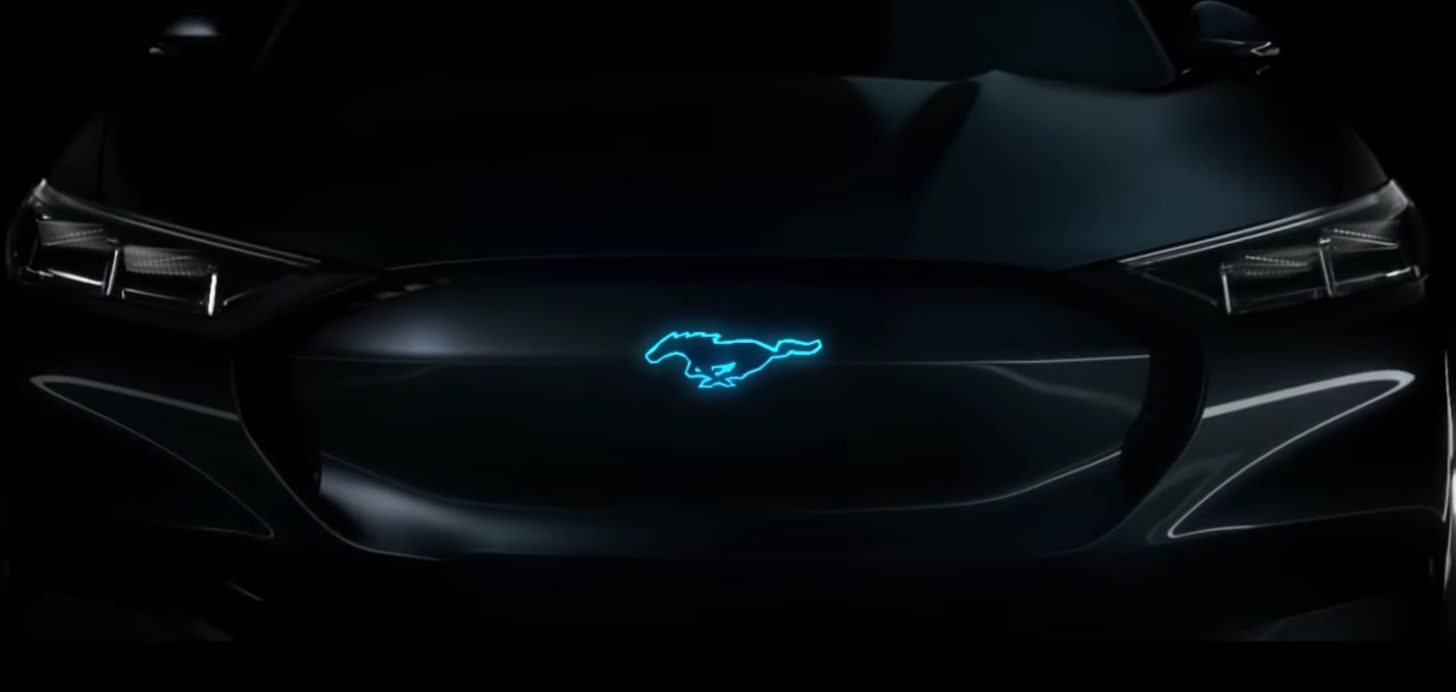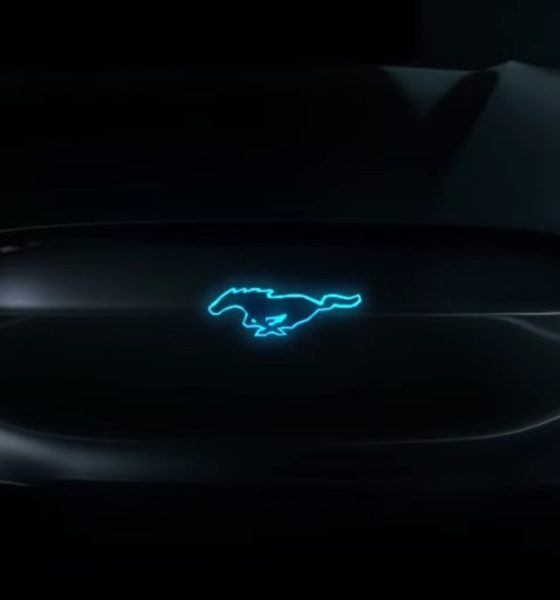

News
Ford taunts Tesla, Silicon Valley in new ad: ‘Talk doesn’t get things done. Building does’
Amidst the assault from electric vehicles like the Tesla Model 3, and with tech companies like Google and Apple dipping their feet in the transportation industry, veteran carmaker Ford is fighting back. In a recent ad campaign debuting the company’s new “Built Ford Proud” slogan, the company boldly took shots at Silicon Valley and new, tech-focused carmakers like Tesla, stating that ultimately, it is builders like Ford that would usher in the future of transportation.
Ford’s new ads, the most notable of which is titled “The Future is Built,” stars Hollywood A-lister Bryan Cranston of Breaking Bad fame. In the opening scene of the ad alone, it was evident that the legacy carmaker was taunting tech companies, with Cranston throwing an aside after walking into a stage, stating that “the future isn’t created in a keynote address.” In a particularly telling part of Ford’s advertisement, Cranston addressed viewers, noting that “Talk doesn’t get things done. Building does.”
And building is something that Ford has been doing for more than 100 years. Ford, through the Hollywood A-lister, proudly notes that the company would continue building, all the way into the future. The commercial even delves into Ford’s upcoming plans, including intelligent mobility and what appears to be a new hybrid or battery-powered Mustang. The ad ends with Cranston driving a Ford F-150 pickup truck — America’s best-selling vehicle — remarking “Let the other guys keep dreaming about the future. We’ll be the ones building it.”
Ford’s “The Future is Built” TV spot is one of several campaigns that the legacy carmaker is rolling out. Apart from television commercials, Ford is also going all out with print ads pushing its new slogan. Jim Farley, Ford Motor Co.’s president of global markets, noted in a statement to Automotive News that “The company’s got its swagger back.” The Ford executive further stated that “We think customers are ready to hear directly from a company that says, ‘Here’s what we’re about, this is what makes us different, and we hope you like it.’ ”
Ford’s newest advertisements continue the carmaker’s working partnership with Bryan Cranston, who initially starred in a Super Bowl commercial two years ago. According to Farley, the Breaking Bad actor “really captures that no-baloney, real honesty that frankly we don’t hear much of anymore.”
Over the past months, Ford’s place in the US auto market has progressively been challenged by upstart companies, particularly Tesla, whose Model 3 electric sedan has started to make an impact in the country’s passenger car sales. With Elon Musk stating that a pickup truck would be coming soon as well, a company like Ford, which relies heavily on its trucks, has to dig deep to keep its place in America’s car market. In September alone, the Model 3 became the United States’ top-selling car in terms of revenue.
What’s rather notable is that Tesla is able to accomplish this through word-of-mouth and the merits of the Model 3 alone. Unlike legacy carmakers, Tesla does not spend money on advertising and paid endorsements. The company does get shout-outs from notable celebrities from time to time, such as rapper Kanye West earlier this year, but they are mostly positive anecdotes from owners themselves. The Model 3 is just getting started in its saturation of the US auto market. Once the vehicle hits its target production rate of 10,000 units per week, and once Tesla releases the Model Y crossover SUV and the Tesla Truck, veteran carmakers like Ford might have to go a bit farther than clever, well-directed ads to compete with the Silicon Valley-bred company.
Watch Ford’s new “The Future is Built” TV spot in the video below.
https://youtu.be/HVlfclOpsK8

Elon Musk
Elon Musk and Tesla AI Director share insights after empty driver seat Robotaxi rides
The executives’ unoccupied tests hint at the rapid progress of Tesla’s unsupervised Robotaxi efforts.

Tesla CEO Elon Musk and AI Director Ashok Elluswamy celebrated Christmas Eve by sharing personal experiences with Robotaxi vehicles that had no safety monitor or occupant in the driver’s seat. Musk described the system’s “perfect driving” around Austin, while Elluswamy posted video from the back seat, calling it “an amazing experience.”
The executives’ unoccupied tests hint at the rapid progress of Tesla’s unsupervised Robotaxi efforts.
Elon and Ashok’s firsthand Robotaxi insights
Prior to Musk and the Tesla AI Director’s posts, sightings of unmanned Teslas navigating public roads were widely shared on social media. One such vehicle was spotted in Austin, Texas, which Elon Musk acknowleged by stating that “Testing is underway with no occupants in the car.”
Based on his Christmas Eve post, Musk seemed to have tested an unmanned Tesla himself. “A Tesla with no safety monitor in the car and me sitting in the passenger seat took me all around Austin on Sunday with perfect driving,” Musk wrote in his post.
Elluswamy responded with a 2-minute video showing himself in the rear of an unmanned Tesla. The video featured the vehicle’s empty front seats, as well as its smooth handling through real-world traffic. He captioned his video with the words, “It’s an amazing experience!”
Towards Unsupervised operations
During an xAI Hackathon earlier this month, Elon Musk mentioned that Tesla owed be removing Safety Monitors from its Robotaxis in Austin in just three weeks. “Unsupervised is pretty much solved at this point. So there will be Tesla Robotaxis operating in Austin with no one in them. Not even anyone in the passenger seat in about three weeks,” he said. Musk echoed similar estimates at the 2025 Annual Shareholder Meeting and the Q3 2025 earnings call.
Considering the insights that were posted Musk and Elluswamy, it does appear that Tesla is working hard towards operating its Robotaxis with no safety monitors. This is quite impressive considering that the service was launched just earlier this year.
Elon Musk
Starlink passes 9 million active customers just weeks after hitting 8 million
The milestone highlights the accelerating growth of Starlink, which has now been adding over 20,000 new users per day.

SpaceX’s Starlink satellite internet service has continued its rapid global expansion, surpassing 9 million active customers just weeks after crossing the 8 million mark.
The milestone highlights the accelerating growth of Starlink, which has now been adding over 20,000 new users per day.
9 million customers
In a post on X, SpaceX stated that Starlink now serves over 9 million active users across 155 countries, territories, and markets. The company reached 8 million customers in early November, meaning it added roughly 1 million subscribers in under seven weeks, or about 21,275 new users on average per day.
“Starlink is connecting more than 9M active customers with high-speed internet across 155 countries, territories, and many other markets,” Starlink wrote in a post on its official X account. SpaceX President Gwynne Shotwell also celebrated the milestone on X. “A huge thank you to all of our customers and congrats to the Starlink team for such an incredible product,” she wrote.
That growth rate reflects both rising demand for broadband in underserved regions and Starlink’s expanding satellite constellation, which now includes more than 9,000 low-Earth-orbit satellites designed to deliver high-speed, low-latency internet worldwide.
Starlink’s momentum
Starlink’s momentum has been building up. SpaceX reported 4.6 million Starlink customers in December 2024, followed by 7 million by August 2025, and 8 million customers in November. Independent data also suggests Starlink usage is rising sharply, with Cloudflare reporting that global web traffic from Starlink users more than doubled in 2025, as noted in an Insider report.
Starlink’s momentum is increasingly tied to SpaceX’s broader financial outlook. Elon Musk has said the satellite network is “by far” the company’s largest revenue driver, and reports suggest SpaceX may be positioning itself for an initial public offering as soon as next year, with valuations estimated as high as $1.5 trillion. Musk has also suggested in the past that Starlink could have its own IPO in the future.
News
NVIDIA Director of Robotics: Tesla FSD v14 is the first AI to pass the “Physical Turing Test”
After testing FSD v14, Fan stated that his experience with FSD felt magical at first, but it soon started to feel like a routine.

NVIDIA Director of Robotics Jim Fan has praised Tesla’s Full Self-Driving (Supervised) v14 as the first AI to pass what he described as a “Physical Turing Test.”
After testing FSD v14, Fan stated that his experience with FSD felt magical at first, but it soon started to feel like a routine. And just like smartphones today, removing it now would “actively hurt.”
Jim Fan’s hands-on FSD v14 impressions
Fan, a leading researcher in embodied AI who is currently solving Physical AI at NVIDIA and spearheading the company’s Project GR00T initiative, noted that he actually was late to the Tesla game. He was, however, one of the first to try out FSD v14.
“I was very late to own a Tesla but among the earliest to try out FSD v14. It’s perhaps the first time I experience an AI that passes the Physical Turing Test: after a long day at work, you press a button, lay back, and couldn’t tell if a neural net or a human drove you home,” Fan wrote in a post on X.
Fan added: “Despite knowing exactly how robot learning works, I still find it magical watching the steering wheel turn by itself. First it feels surreal, next it becomes routine. Then, like the smartphone, taking it away actively hurts. This is how humanity gets rewired and glued to god-like technologies.”
The Physical Turing Test
The original Turing Test was conceived by Alan Turing in 1950, and it was aimed at determining if a machine could exhibit behavior that is equivalent to or indistinguishable from a human. By focusing on text-based conversations, the original Turing Test set a high bar for natural language processing and machine learning.
This test has been passed by today’s large language models. However, the capability to converse in a humanlike manner is a completely different challenge from performing real-world problem-solving or physical interactions. Thus, Fan introduced the Physical Turing Test, which challenges AI systems to demonstrate intelligence through physical actions.
Based on Fan’s comments, Tesla has demonstrated these intelligent physical actions with FSD v14. Elon Musk agreed with the NVIDIA executive, stating in a post on X that with FSD v14, “you can sense the sentience maturing.” Musk also praised Tesla AI, calling it the best “real-world AI” today.








